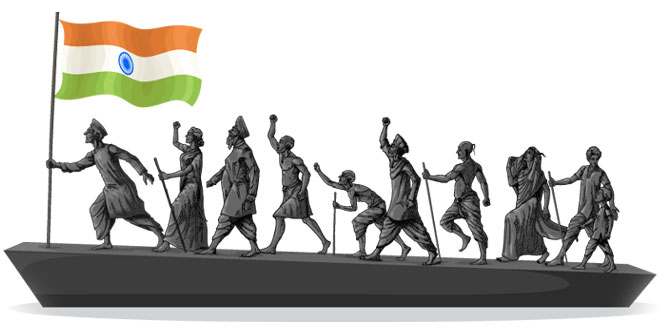Question: Name any two organisations which were formed by the business class to organize their business interests.
Answer: (i) Indian Industrial and Commercial Congress. (ii) Federation of the Indian Chamber of commerce and Industries.
Question: Name any two industrialists who actively participated in the Civil Disobedience movement.
Answer: (1) Purshottamdas Thakurdas (2) D. Birla
Question: (i) Why the Congress ignored the dalit’s or oppressed for a long time? (ii) Name the national leader who declared that swaraj would not come for a hundred years if untou- chability was not eliminated.
Answer: (i) The Congress had ignored the dalits for fear of offending the sanatanis the conservative high caste Hindus. (ii) Mahatma Gandhi.
Question: Who organised the dalits into the Depressed Classes Association?
Answer: Dr. B.R. Ambedkar
Question: Why Dr. B.R. Ambedkar clashed with Mahatma Gandhi at the Second Round Table Conference?
Answer: B.R. Ambedkar clashed over the issue of separate electorates for dalits.
Question: Name the Pact which gave the Depressed Classes reserved seats in provincial and central legislative councils.
Answer: Poona Pact signed in 1932.
Question: Who created the image of Bharat Mata? Or Who was the author of the novel Anandamath?
Answer: Bankim Chandra Chattopadhyay.
Question: Who published a massive four volume collection of Tamil Folk tales, The Folklore of Southern India?
Answer: Natesa Sastri.
Question: What was Satyagraha? Name any two places where Satyagraha was launched by Gandhiji. Or Name the two main ‘Satyagraha’ movements organised by Mahatma Gandhi successfully in favour of peasants in 1916 and 1917.
Answer: Satyagraha was a non-violent method of mass agitation against the oppressor. The idea of satyagraha emphasised the power of truth and the need to search for truth.
- Champaran: Gandhiji launched the Satyagraha to inspire the peasants to struggle against the oppressive plantation system.
- Kheda: He launched the Kheda Satyagraha to support the peasants who were not in a position to pay the revenue due to crop failure.
Question: Who was the writer of the book, ‘Hind Swaraj’. What was the theme of the book? Or Explain the ideas of Gandhiji as he expressed in the famous book ‘Hind Swaraj’ regarding Non-cooperation.
Answer: Mahatma Gandhi wrote the Hindi Swaraj. In the book, Gandhiji declared that the British rule was established in India with the cooperation of Indians, and had survived only because of this cooperation. If Indians refused to cooperate, the British rule in India would collapse within a year, and Swaraj would be established.
Question: Mention any four factors which were responsible in arousing the spirit of nationalism in India.
Answer:
- Political unification of the country under the Britishers.
- Destruction of India’s old social and economic system.
- Development of modern trade and industry.
- The sense of being oppressed under colonialism provided a shared bond that tied many different groups.
Question: What was the impact of the First World War on India? Or Explain new economic and political situations created in India during the First World War. Or What was the impact of the First World War on the economic conditions in India?
Answer: The War created a new economic and political situation:
- It led to a huge increase in defence expenditure which was financed by war loans and increasing taxes, customs duties were raised, and income tax introduced.
- Through the war years, prices increased – doubling between 1913 and 1918 – leading to extreme hardships for the common people.
- Villagers were called upon to supply soldiers, and the forced recruitment in rural areas caused widespread anger.
 Class Notes NCERT Solutions for CBSE Students
Class Notes NCERT Solutions for CBSE Students





